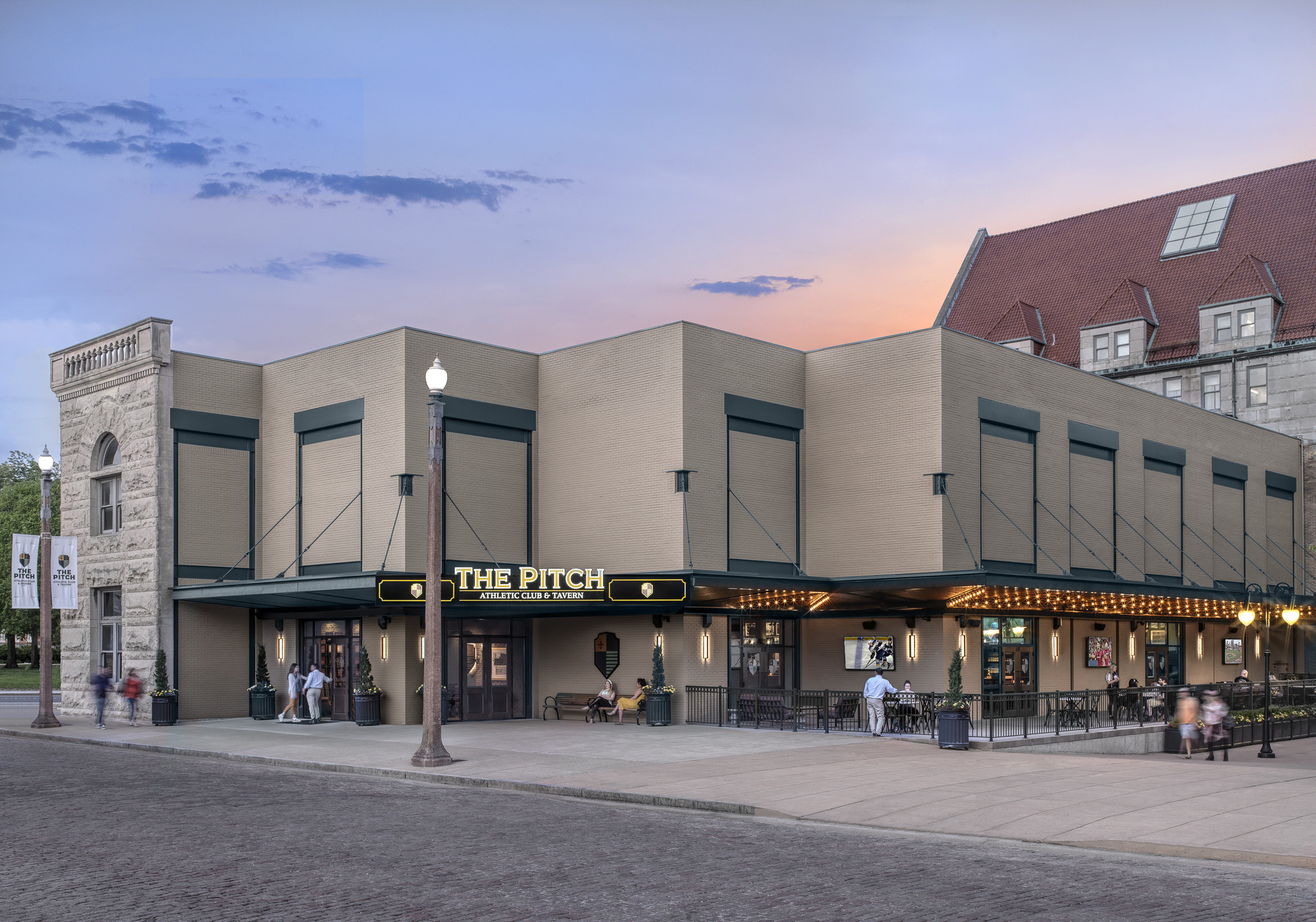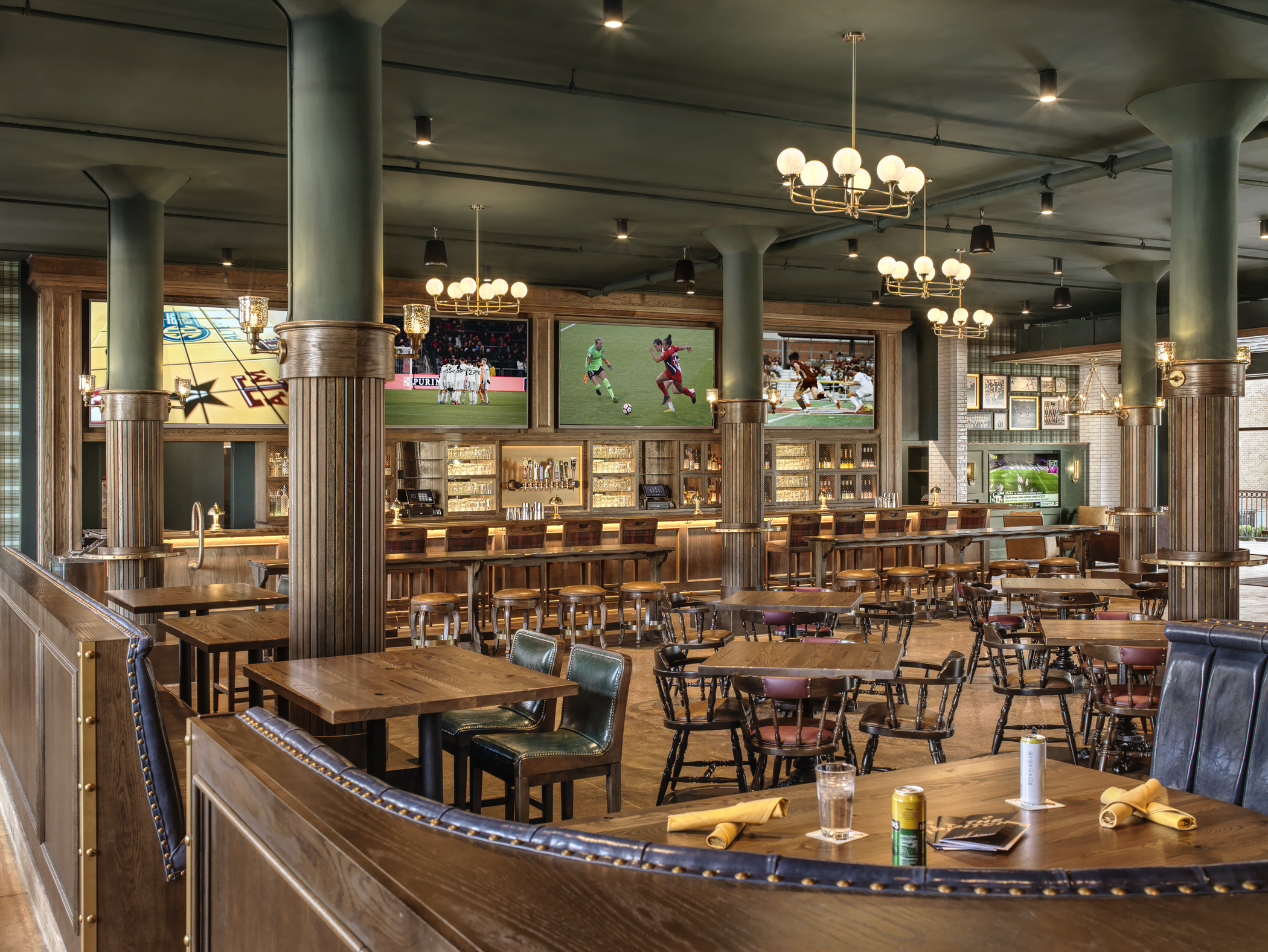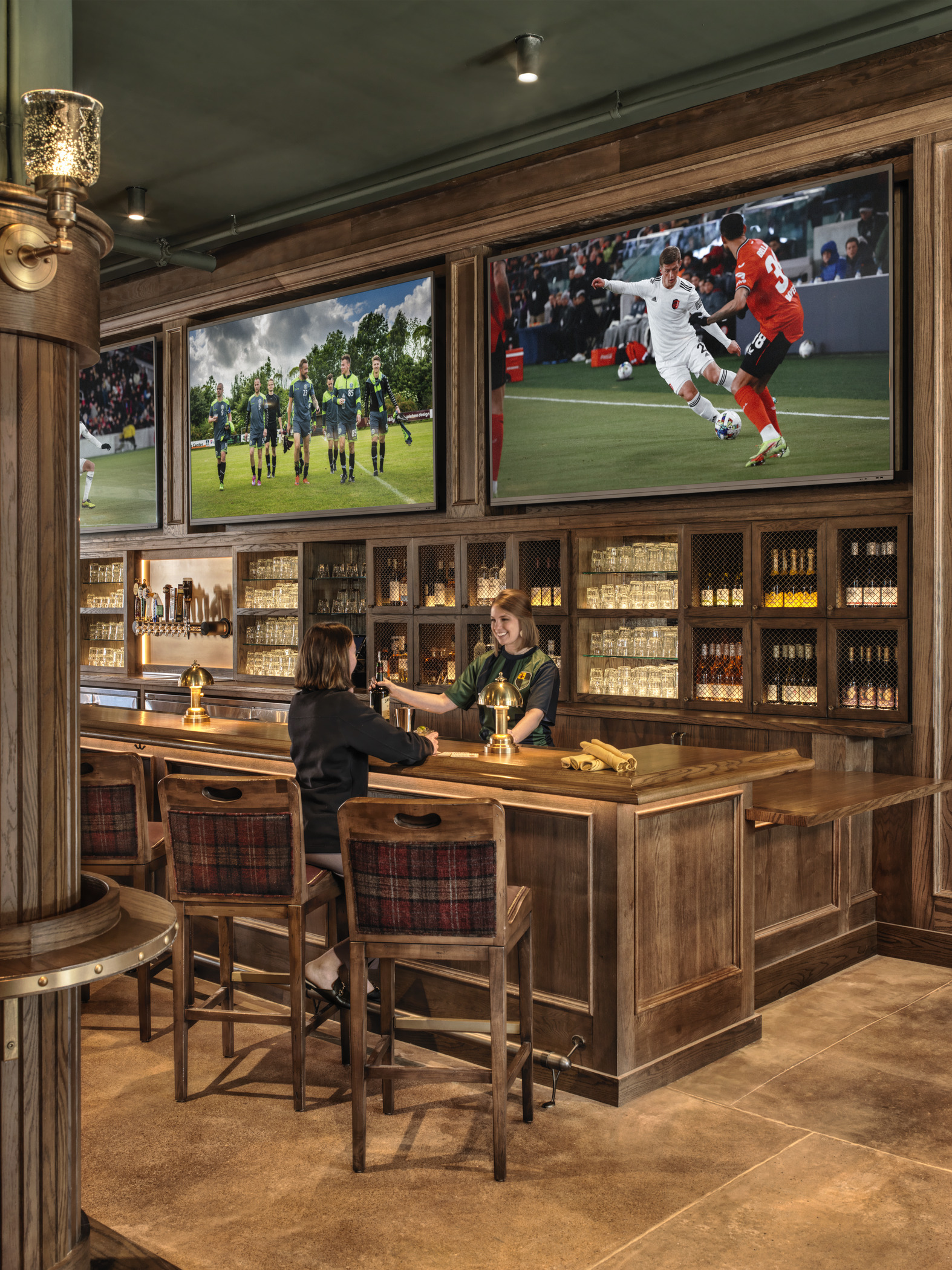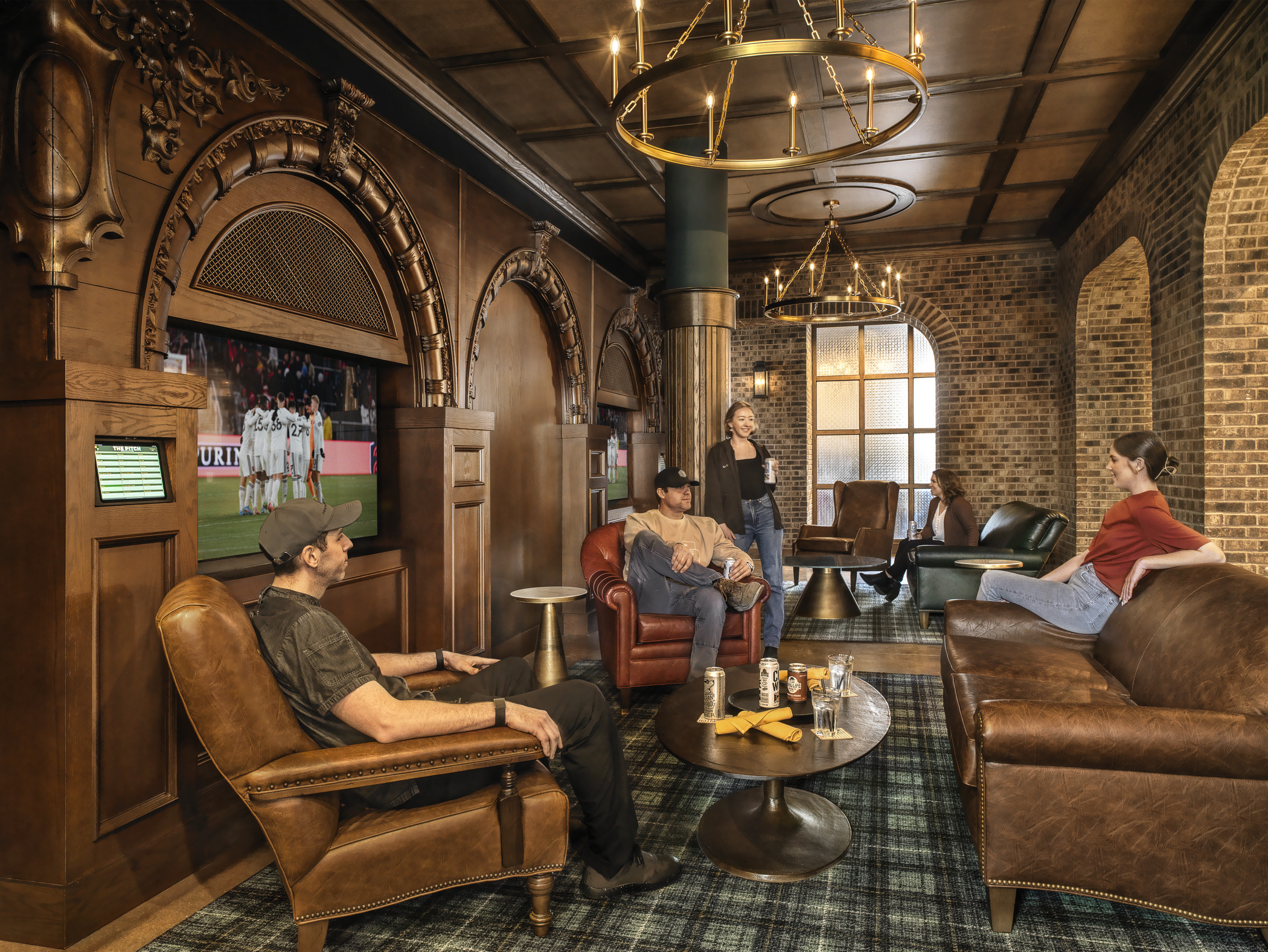A major focus of Lawrence Group’s design principles is respect, preserve, and even reclaim the history of a project site as needed. One such opportunity arose while designing The Pitch Athletic Club & Tavern at St. Louis Union Station.
The Pitch embodies much of the rich history that has sculpted the City of St. Louis at large. St. Louis Union Station originally opened in 1894, and was the largest station in the world to have tracks and passenger service areas on one level at the time of construction. Designed by Theodore Link, the station has since been registered as a National Historic Landmark and has welcomed many in its halls throughout the years.
The space the restaurant now occupies was originally a portion of a large baggage claim in the Headhouse section of St. Louis Union Station. This area, added to the station in 1937, was created to meet the demand of the then-bustling rail industry. By the 1940’s, nearly 100,000 people passed through station every day, so the expanded storage space was sorely needed.

The original exterior of the Headhouse is preserved in the design for The Pitch
As consumer rail travel declined following the growth of automobile and air travel throughout the 1950’s and 1960’s, usage of St. Louis Union Station similarly fell. The lack of demand led to the former baggage area being converted to a restaurant space in 1985, with many tenants occupying the restaurant until the space was eventually abandoned in the 2000’s.
When Lodging Hospitality Management (LHM) acquired the property in 2012, they knew they wanted to pay tribute to the history of both the Station and to the St. Louis region at large. A longstanding client of Lawrence Group, LHM approaches many of their properties with a similar deference to history as Lawrence Group does. As development plans for Union Station began to manifest throughout the 2010’s, the space The Pitch now occupies awaited the right opportunity – and when St. Louis announced the construction of the City’s first MLS stadium across the street from St. Louis Union Station in 2019, the long-dormant site at last found its perfect calling.

The lush atmosphere of The Pitch marries the classic feel of football taverns with the storied legacy of St. Louis Union Station
Great pains were taken to ensure the utmost respect to the site’s original design shone through. This includes the excavation of glazed brick and historic windows created in the site’s original 1937 construction, hidden away over the years by layers of drywall renovation. In addition, the brick’s smooth curved edges and style pay homage to the architectural style of the era. The impressive, tapered column capitals from the original building can even be seen exposed in the main dining space. The years of history are most evident in the character held within concrete flooring, adding a new dimension to the experience of the space.
Perhaps most remarkable aspect of The Pitch’s design is its bar back, itself a long-storied piece of St. Louis history. The original wood and construction of The Pitch’s bar dates back to at least 1889, when famed gilded-age restauranteur Tony Faust opened the renovation of his restaurant, Tony Faust’s Oyster House & Saloon. Beginning operation in 1870, Faust’s restaurant was famed for its quality, splendor, and oysters, a true delicacy for St. Louisians at the time. The restaurant grew in reputation over the years, until it eventually became known by many as the finest restaurant west of New York, playing host to the most esteemed members of the St. Louis social elite.
After Faust retired in 1902, the restaurant began a steady decline until it permanently closed on June 30, 1916. Many items from the restaurant were put on auction, and when the building was demolished in 1933, some elements were rescued – including the restaurant’s iconic bar back. For years the ornately detailed wooden bar was reused in a variety of locations throughout St. Louis Union Station, and when LHM acquired the space in 2012, they realized the true value of the piece. With the opening of The Pitch, that value can now be known to all.

The one-of-a-kind bar back ties the space together through a rich embodiment of St. Louis history
The painstaking restoration of the restaurant and bar back incorporates a care and respect towards the history of both Union Station and St. Louis at large that Lawrence Group is proud to uphold. This care even extends to the logo of The Pitch, which honors iconic elements of St. Louis’ cultural background (such as the 16 stripes representing the 16 counties in the metro area, or the fleur de lis paying tribute to the City’s French cultural heritage). This thoughtfulness ensures that The Pitch is not only a great place for fans of the beautiful game to congregate, but that they can enjoy a truly unique experience with each and every visit.

A variety of different gathering spaces provide ample space for guests to gather and enjoy The Beautiful Game
We know that our projects will contribute to the continued stories of the locations and communities they are a part of. Being a good steward of our past ensures the best future possible for all who will come to know our work – and it allows us to honor the accomplishments of those who lay the foundation for where we are now.
